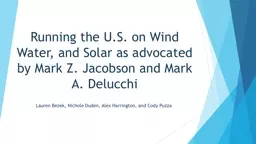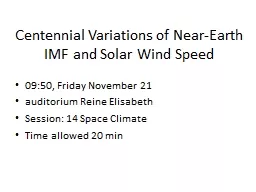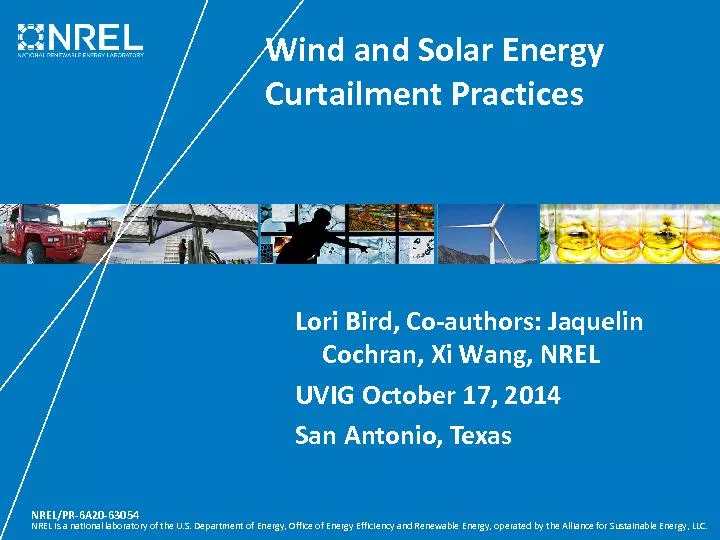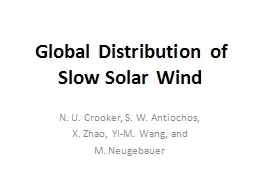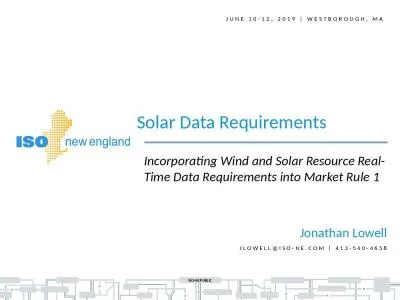PPT-Running the U.S. on Wind Water, and Solar as advocated by M
Author : karlyn-bohler | Published Date : 2017-03-16
Lauren Bezek Nichole Duden Alex Harrington and Cody Puzza Mark Z Jacobson professor at Stanford University and Mark A Delucchi research scientist at the University
Presentation Embed Code
Download Presentation
Download Presentation The PPT/PDF document "Running the U.S. on Wind Water, and Sola..." is the property of its rightful owner. Permission is granted to download and print the materials on this website for personal, non-commercial use only, and to display it on your personal computer provided you do not modify the materials and that you retain all copyright notices contained in the materials. By downloading content from our website, you accept the terms of this agreement.
Running the U.S. on Wind Water, and Solar as advocated by M: Transcript
Download Rules Of Document
"Running the U.S. on Wind Water, and Solar as advocated by M"The content belongs to its owner. You may download and print it for personal use, without modification, and keep all copyright notices. By downloading, you agree to these terms.
Related Documents

